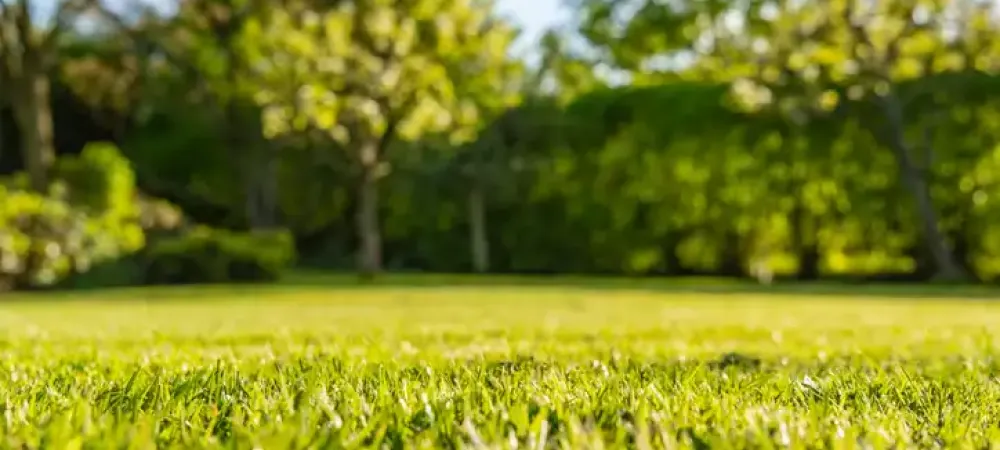Fall Lawn Care Tips for Virginia Homeowners

As the summer days start to wane, it's time to turn your attention to preparing your lawn for the cooler months ahead. Proper fall lawn care can make a significant difference in the health and appearance of your yard come spring. Discover how a few simple steps can transform your lawn into the envy of the neighborhood.
Why Fall Lawn Care Matters
Before diving into the tips, let’s uncover why fall is such a critical time for lawn care. The cooler temperatures and increased rainfall provide the perfect conditions for your grass to repair and strengthen itself after the summer heat. This preparation ensures a lush, healthy lawn next year.
Essential Fall Lawn Care Tips
Fertilize Your Lawn
Virginia's unique transition climate, characterized by a mix of warm and cold seasons, allows for the successful growth of both warm-season and cool-season grasses. Fertilizing your lawn in the fall provides essential nutrients that help grass grow strong and healthy roots.
- Cool-Season Grasses: Apply a nitrogen-rich fertilizer between September and November to strengthen roots and prepare for winter.
- Warm-Season Grasses: Fertilize from July to September to maintain healthy growth and prepare for dormancy.
Mow at the Right Height
Adjusting your mowing height in the fall is crucial for preventing grass from matting under snow and leaves. Proper mowing techniques can significantly impact the health of your lawn, ensuring it stays healthy through the winter and into the next growing season
- Late Fall Cutting: Reduce the mowing height by 1-2 inches shorter than during the growing season. Cutting the grass shorter in late fall helps prevent matting and disease, ensuring it gets enough sunlight and air.
Clean Up Leaves
Fallen leaves can smother your lawn if left unattended. Regular leaf cleanup allows sunlight to reach the grass and prevents diseases. This step not only keeps your lawn looking tidy but also promotes healthier grass growth.
- Mulching: Use a mower to mulch fallen leaves. Mulching chops the leaves into small pieces that decompose and add beneficial organic matter back into the soil.
- Raking: Regularly rake and remove leaves to ensure sunlight reaches the grass. Raking prevents leaves from piling up and suffocating the grass underneath.
Overseed Thin or Bare Areas
Fall is the perfect time to overseed cool-season lawns. This helps improve lawn density and repair any bare spots. Overseeding in the fall ensures that new grass can establish itself before the winter, leading to a thicker, healthier lawn in the spring.
- Overseeding: Use a product like Scotts EZ Seed to overseed thin or bare areas. This product is designed to make the process easy and effective, filling in those sparse spots with lush new growth.
Aerate and Dethatch if Needed
Aeration and dethatching help improve soil health by allowing water, nutrients, and oxygen to reach the roots more effectively. These practices can make a significant difference in the overall health and resilience of your lawn.
- Aeration: Fall is a good time to aerate compacted soil for cool-season grasses. Aerating breaks up compacted soil, allowing roots to grow deeper and stronger.
- Dethatching: Remove excess thatch to promote healthy growth and prevent disease. Thatch is a layer of dead grass and roots that can choke your lawn if not managed.
Control Weeds
Weed control in the fall can prevent winter weeds and manage existing ones. Addressing weeds now helps ensure a healthier, weed-free lawn come spring.
- Pre-Emergent Herbicides: Apply these to prevent winter weeds from taking root. Pre-emergents stop weed seeds from germinating, reducing the number of weeds you'll have to deal with later.
- Treat Existing Weeds: Fall is effective for treating any weeds currently present in your lawn. Treating weeds now prevents them from spreading and competing with your grass.
Water Appropriately
Continue watering your lawn as needed until the ground freezes. Proper watering practices help maintain grass health throughout the fall and ensure it remains vibrant and strong.
- Continuous Watering: Keep watering to ensure the grass remains healthy. Even in cooler weather, your lawn needs adequate moisture to stay green and resilient.
Repair and Maintain
Addressing any damaged areas and maintaining your soil's health is key to a thriving lawn. Regular maintenance ensures your lawn is ready to bounce back strong in the spring.
- Dead Patches: Repair any dead patches or lay new sod if necessary. Taking care of bare spots now prevents them from becoming bigger problems later.
- Soil pH: Test and adjust the soil pH if needed to ensure optimal growing conditions. Correct soil pH helps your grass absorb nutrients more effectively.
Prepare for Winter
Properly storing your tools and furniture will protect them from the elements and extend their lifespan. Taking the time to clean and store items properly can save you time and money in the long run.
- Tools and Furniture: Clean and store your lawn care tools and outdoor furniture for winter. Proper storage prevents rust and damage, keeping your equipment in good condition for next season.
Start Now for a Beautiful Lawn Year-Round
Investing time in your lawn during the fall pays off significantly when spring arrives. By following these tips, you'll ensure a healthy, vibrant lawn that stands up to the winter and thrives when the weather warms up. If you need help creating a healthy lawn, contact us today and let our experts help!

